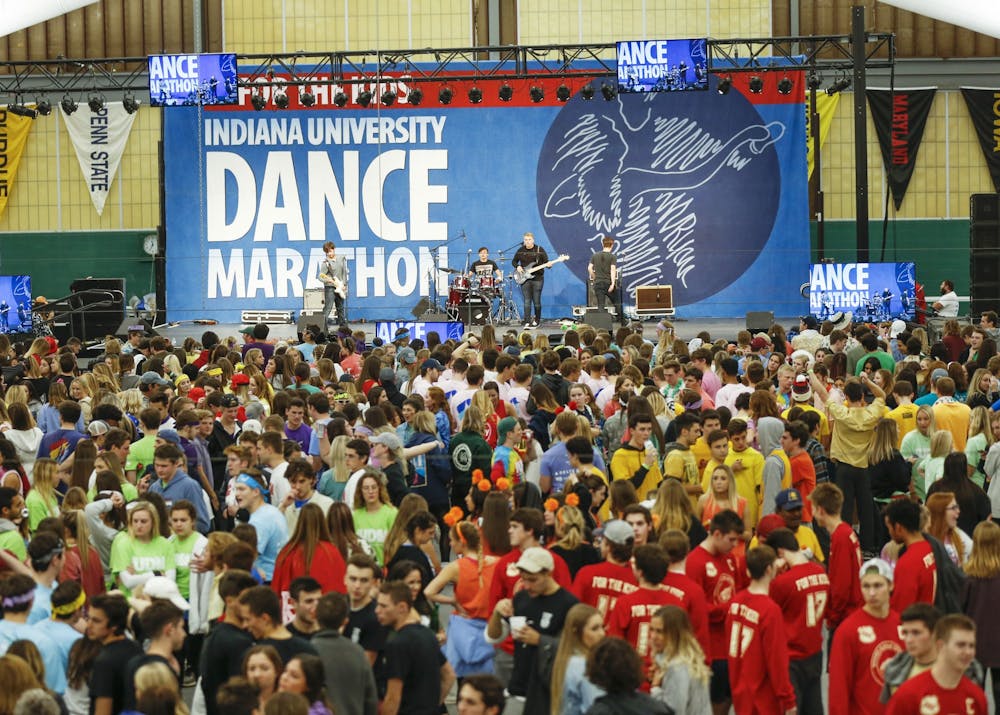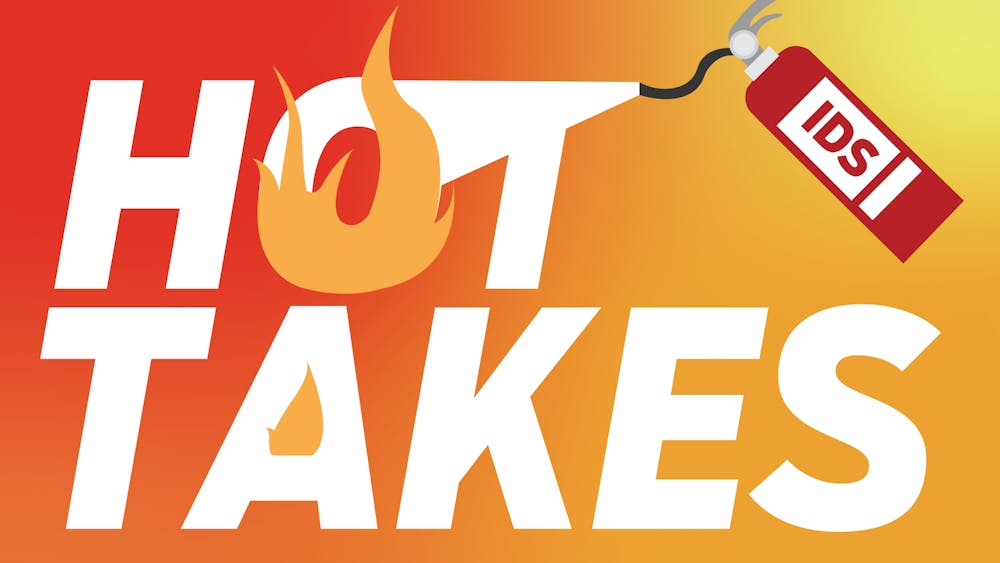IU Dance Marathon has given millions of dollars to Riley Children’s Foundation, yet, simultaneously, for many students it often represents two problems: nationally, a broken health care system, and, locally, cultural and class divisions.
IUDM has made a significant financial effect on pediatric research and care in Indiana. According to a brochure which IUDM sent to businesses this year, the dance marathon group has raised nearly $40 million since it was founded in 1991. The Riley Children’s Foundation, the nonprofit which receives the funds, gives three-quarters to the Wells Center for Pediatric Research at the IU School of Medicine for research and gives the remaining quarter to clinical care at the Riley Hospital for Children in Indianapolis.
The amount raised annually sets a new record almost every year. Contributors gave $4.2 million in 2018. According to IUDM’s Facebook page, the annual Day of Hope topped last year’s record by raising over $650,000 in just 24 hours.
There is no doubt that IUDM members have done an immense amount of good. On the personal level, the fundraising and planning for the event has built strong community among participants. The Indiana Daily Student has published several accounts, in story quotations and columns, since the 1990s expressing how IUDM “changed my life” or provided a sense of community. Moreover, the parents of patients at Riley Children’s Hospital express gratitude for the dancers being kind to their children.
At the same time, for many students, IUDM represents large problems on the national and local levels.
The first problem is an expensive national health care system which is dependent on philanthropy.
One study from researchers at Harvard University confirmed the oft-cited fact that the United States spends almost twice as much per capita as other high-income countries, despite having worse health outcomes. The hidden costs of American health care include philanthropic efforts on both large and small scales.
Crowdsourcing for medical funding has become ubiquitous. According to GoFundMe, more than $650 million raised each year goes to medical expenses. The CEO said this year that 1 in every 3 GoFundMe donations goes toward medical care.
A report from Giving USA and the Indiana University Lilly Family School of Philanthropy indicates that health philanthropy plays a major part in a philanthropy haul worth over $400 billion annually. According to a commentary published in the Journal of American Medicine, “exceptional philanthropy” has increased, with individual Americans donating hundreds of billions of dollars each year without reliable scientific or societal oversight. Such philanthropy cannot ensure funds appropriately support scientific merit, independent research or societal equity.
Improving the American health care system will be the work of young people. One would not be remiss in expressing a hope that an IUDM participant offers an equal effort in reforming the national health care system. The discussion has raged on Twitter, but it does not provide satisfying answers.
The second problem IUDM represents is local: Students and community members experience divisions along cultural and class lines.
The cultural division runs along old battle lines: IUDM has long been associated with the greek community at IU.
Students have been torn about IUDM’s connection to greek life for decades. In an IDS piece from 2000, a greek student called for a partial boycott of IUDM as a way to protest the IU administration, saying, “Fraternities and sororities have taken enough abuse from this University.” The idea was met with a column in response, which was titled, “Dance Marathon not a battleground.” Another IDS columnist argued, “fraternities and sororities do not make the campus and are not the sum of IU's major functions such as Dance Marathon.”
The perception that IUDM is quintessentially greek has lasted, even if the claim that IUDM is a greek activity is probably overstated. Since the Residence Hall Association and IUDM created a residence hall team in 2008, the RHA team has been the most successful fundraising team, outperforming the fraternity in second place by almost 7 to 1. However, a relatively small fraction of the total pot will be filled by the RHA team when compared to the greek sum.
The core of the perceived conflict rests on the conundrum stated by the IDS Editorial Board in 2014: “While fraternities do plenty of good, some also display severe issues in their culture that can’t be overlooked by how much money is raised at IU’s Dance Marathon.”
Over the last 20 years, IUDM has been used as one of the default reasons to argue for a more positive image for greek students and for IDS staffers to contend that reporting of greek activities has been fair.
“The complaint ... is that the IDS unfairly represents the greek community,” wrote two IDS staffers in 2006. IUDM can help outweigh that, the idea goes. One columnist in 2002 wrote that IUDM changed her view of the entire greek community. Another writer in 2013, praising greek philanthropy, agrees: “Those freshmen who decided to opt out of going greek this year might want to reconsider.”
The local division also falls along the lines of socioeconomic class.
Students from more affluent economic backgrounds have an advantage in the fundraising competition. The IUDM donations website, which displays the highest-fundraising participants and teams, shows the top 20 participants this year have generally received a large amount of funds from family members. Calculations indicate that each member on average has received nearly $1,200 from donors with the same last name or from people identifying as mothers, fathers, aunts, uncles, cousins or grandparents.
It is not true that IUDM participation is only for students from wealthy or high-income families. It is true that its runaway success can be partly attributed to its networking with the rich. Then again, so is most philanthropy.
The IUDM corporate brochure reports that 100% of the reported fundraising total goes to the Riley Children’s Foundation. One might ask, how does IUDM pay for operational needs and social activities? At the time of publication, IUDM had not responded to a request for information about the operational budget.
There is one more complication: canning, the common practice of standing along well-trafficked streets asking pedestrians for cash for IUDM.
Signs on Kirkwood Avenue placed by the city of Bloomington urge pedestrians to discourage panhandling. After the controversial removal of homeless people in Bloomington from Peoples Park, a new line of discourse arose: What is the difference between canning and panhandling?
Some students, including past members of student government, have argued there is no difference. The debate is about class division and how society treats the poor, not about a belief that canning for IUDM is truly harmful.
An IDS columnist wrote the week before IUDM two years ago that “it is high time that some people stop cynically tearing these people and this organization down.” Despite such sentiments, it may be true that IUDM will face an increasingly uphill battle with persuading others to join the cause.
Disdain for IUDM may be slightly misplaced, but the discomfort speaks to a desire for cures for large problems in our community and society.
In short, IUDM is a symptom of problems in Bloomington and the United States. Are there cures to these problems? Or stated more precisely: Will we have a hospital system which never needs philanthropy? Will the fraternity and sorority members ever be unified with the rest of the student body? Only time will tell.






